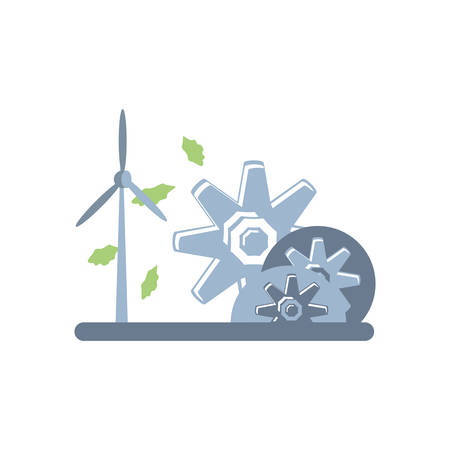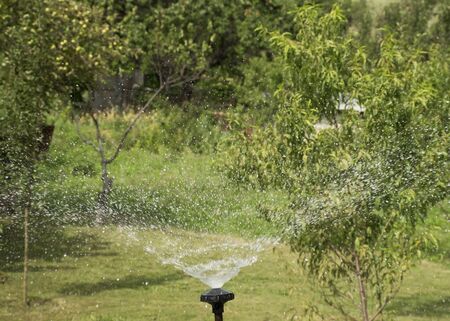The Science of Soil Moisture
When it comes to watering smarter, understanding soil moisture is the foundation. In American landscapes, soil isn’t just “dirt”—it’s a living system made up of minerals, organic matter, and tiny pockets that hold water and air. The texture (sand, silt, clay) and structure (how those particles clump together) of your soil determine how much water it can actually hold after a good soaking. Sandy soils drain fast and need more frequent irrigation, while clay-heavy soils hang on to moisture but are prone to waterlogging if you overdo it. Why does this matter for your plants? Because the roots need both water and oxygen to thrive. Overwatering in heavy soils or underwatering in sandy ones can stress your plants, leading to weak growth or disease. By getting familiar with your garden’s soil type and observing how quickly it dries out after rain or watering, you’re taking the first step toward healthier plants—and using less water overall. This practical knowledge is especially crucial across diverse American climates, from arid Southwest gardens to lush Pacific Northwest backyards. With the right approach to soil moisture, every drop counts.
Timing is Everything: When and How Much to Water
When it comes to watering your garden or landscape, timing really is everything. Understanding when and how much to water can make the difference between a thriving yard and wasted water—or worse, stressed-out plants. In the U.S., where climates vary from arid deserts in Arizona to humid summers in Georgia, learning to read local cues and building a customized watering schedule is key. Here’s how you can make smarter decisions for your plants and conserve resources at the same time.
Reading Plant and Weather Cues
Your plants often tell you when they need water—if you know what signs to look for. Wilting leaves in the heat of the day might recover by evening, indicating temporary stress rather than true thirst. Check soil moisture before reaching for the hose; if it’s still damp two inches down, hold off on watering. Weather also plays a big role: a hot, windy day dries soil faster than a cool, overcast one. Pay attention to forecasts so you don’t water just before a rainstorm.
Building a Local Watering Schedule
Every region has its own climate quirks. Sun exposure, rainfall patterns, and even soil type all impact how often your landscape needs water. For instance, lawns in Southern California need less frequent but deeper soakings compared to those in the Pacific Northwest where rainfall is more common.
| Region | Typical Rainfall Pattern | Recommended Watering Frequency |
|---|---|---|
| Southwest (e.g., Arizona) | Low rainfall, high sun | 1-2 times/week (deep soak) |
| Southeast (e.g., Georgia) | Frequent summer storms | As needed, check forecast first |
| Northeast (e.g., New York) | Evenly spread rain | Once/week or less during wet periods |
| Pacific Northwest (e.g., Oregon) | Wet winters, dry summers | 2-3 times/week in summer only |
Sun Exposure Matters
Beds that get full afternoon sun will dry out much faster than those shaded by trees or structures. Adjust your schedule based on which parts of your yard are getting the most heat during the day.
Handy Tips for Smarter Watering:
- Water early in the morning to reduce evaporation and fungal diseases.
- Avoid evening watering if possible—damp overnight conditions promote mildew.
- If using an irrigation controller, adjust settings seasonally as daylight hours change.
- Track rainfall with a simple gauge so you don’t double up on moisture.
By tuning into your local environment and learning to spot these cues, you’ll save water and keep your garden healthier year-round. Remember: consistency beats quantity—plants thrive on regular but appropriate watering matched to their actual needs.

3. Smart Irrigation Controllers: What Are They and How Do They Work?
Smart irrigation controllers are game-changers for anyone looking to optimize their watering routine, conserve water, and keep landscapes healthy. But what exactly sets them apart from traditional timers? Let’s break it down.
Types of Smart Irrigation Controllers
There are two main types you’ll find at your local garden center or online: weather-based (ET) controllers and soil moisture sensor-based controllers. Weather-based models adjust watering schedules using real-time local weather data, while soil moisture controllers use sensors planted directly in the ground to measure actual soil moisture levels. Some advanced systems even combine both technologies for maximum efficiency.
Key Features of Smart Controllers
Most smart controllers connect to Wi-Fi, allowing you to manage settings right from your smartphone or computer—no more running out to the garage in your slippers! Other common features include customizable zones for different plant types, automatic rain shutoff, seasonal adjustments, and compatibility with voice assistants like Alexa or Google Home.
How Smart Controllers Adapt Watering Schedules
The magic behind smart irrigation controllers is their ability to take the guesswork out of watering. Weather-based controllers pull data from local weather stations or online sources, adjusting run times based on rainfall, temperature, humidity, and wind. If a big storm rolls through your neighborhood, these systems will automatically skip or reduce watering cycles. Soil sensor models monitor how much moisture is actually available at root level and only trigger irrigation when your plants really need it—no more wasting water on already-saturated ground.
By blending technology with practical gardening know-how, smart irrigation controllers help American homeowners save money on water bills, reduce landscape stress during droughts, and support sustainable yard care—all with just a few taps on an app.
4. Setting Up and Programming Your Smart Controller
If you’re ready to take your backyard, veggie patch, or suburban lawn to the next level, installing and programming a smart irrigation controller is a game changer. With the right setup, you’ll save water, protect your plants, and make life easier—all while keeping that landscape looking sharp. Here’s a step-by-step guide to help you set up and customize your system for your unique outdoor space.
Step 1: Choose the Right Smart Controller
First things first—pick a smart controller that fits your yard size and plant needs. Most major brands offer controllers with Wi-Fi connectivity, app-based management, and weather-sensing capabilities. Consider how many zones you need (for example, flower beds vs. lawn), as well as compatibility with existing sprinkler valves.
| Yard Type | Recommended Zones | Suggested Features |
|---|---|---|
| Small Backyard | 4-6 | Basic scheduling, rain sensor |
| Vegetable Garden | 2-4 | Soil moisture integration, drip line support |
| Suburban Lawn | 6-12 | Weather prediction, multiple schedules |
Step 2: Installation Basics
Most smart controllers are designed for DIY installation. Mount the controller near your current irrigation timer and connect the wires from each irrigation zone. Plug in the device, connect it to Wi-Fi following the manufacturer’s app instructions, and test the connection to each zone before proceeding.
Pro Tip:
If you’re replacing an old controller, snap a picture of the wiring layout before disconnecting anything. This will make reconnecting a breeze.
Step 3: Programming Your Watering Schedule
This is where the smart magic happens. Use your app to set up zones based on plant type (grass, veggies, flowers), sun exposure, and soil type. Most apps walk you through this process step-by-step. Enable weather-based adjustments so your system skips watering when rain is forecasted or increases output during heat waves.
| Zone Name | Plant Type | Irrigation Type | Frequency | Duration (min) |
|---|---|---|---|---|
| Lawn Front Yard | Bermuda Grass | Spray Head | 3x/week (spring/summer) | 15-20 |
| Vegetable Beds East | Tomatoes/Peppers | Drip Line | Daily (summer) | 10-15 |
| Shrub Border South Side | Drought-Tolerant Shrubs | Bubbler/Emitter | 1x/week (all year) | 20-30 |
Troubleshooting & Fine-tuning:
If you notice dry spots or pooling water after a week or two, tweak individual zone times in the app until everything looks just right. Monitor soil moisture sensors if included—they help dial in precision for vegetable gardens especially.
Cultural Note:
Aim to water early in the morning—this matches best practices across most U.S. regions by reducing evaporation loss and discouraging fungal diseases.
The right setup not only conserves water but also ensures your garden or lawn thrives season after season—with minimal stress on your end.
5. Troubleshooting and Common Pitfalls
Tackling Connectivity Issues
Smart irrigation controllers rely on strong Wi-Fi or Bluetooth connections to function correctly. If your system isn’t responding or schedules aren’t updating, check your home’s internet signal near the controller. Try moving your router closer, removing obstacles, or using a Wi-Fi extender. Always update your controller’s firmware, as manufacturers regularly release fixes for connectivity bugs.
Getting Sensor Calibration Right
Soil moisture sensors are only as good as their calibration. If you notice your plants are still wilting or waterlogged, recalibrate the sensor according to the manufacturer’s instructions. Place sensors in representative spots—not too close to drip emitters or on slopes where runoff skews results. Test readings after heavy rains or irrigation cycles to ensure accuracy. Remember: regular calibration is key as soil conditions change with the seasons.
Common Mistakes That Waste Water
- Overwatering: Trust your sensors and data, not just your eyes. Overriding smart schedules can lead to soggy roots and wasted water.
- Poor Placement: Installing sensors only in sunny or shady spots can give a false sense of overall moisture. Use multiple sensors for larger yards.
- Ignoring Local Weather: Make sure your controller uses local weather data—many models integrate with weather forecasts to skip watering before rain.
Tips for Success
- Schedule monthly check-ins to inspect wiring, batteries, and sensor placement.
- If plants look unhealthy, cross-check soil moisture readings with a manual test (like the screwdriver test) before adjusting settings.
- Keep a log of changes made to your system so you can trace problems if they arise later.
Avoiding Plant Harm
Remember that different plants have different water needs—group similar species together on the same irrigation zone whenever possible. Watch for signs of stress like leaf yellowing or curling, and adjust watering times gradually rather than making drastic changes. Smart technology is a powerful tool, but combining it with boots-on-the-ground observation will keep both your garden and water bill healthy.
6. Maximizing Efficiency and Saving Money
Cutting Water Bills with Smart Strategies
Watering smarter isn’t just good for your yard—it’s great for your wallet too. By using soil moisture sensors, setting up smart irrigation controllers, and watering only when necessary, you can significantly reduce your water usage. This means lower monthly bills and less water waste. Check your local utility company’s website; many cities across the U.S. offer tips and online calculators to help you estimate how much water (and money) you can save by upgrading your irrigation system.
Take Advantage of Rebates
Did you know that many American municipalities and water districts offer rebates for installing smart irrigation controllers or weather-based systems? These rebates are designed to encourage homeowners to adopt more sustainable watering habits. Before making any purchases, check with your local water authority or visit EPA’s WaterSense rebate finder to see what incentives are available in your area. Sometimes, these programs will even cover a significant portion of the upgrade costs.
Promoting Sustainable Habits
Sustainable irrigation isn’t just about the technology—it’s about building better habits. Set your smart controller to avoid watering during the hottest parts of the day or right before rain is expected. Periodically inspect your system for leaks, broken sprinkler heads, or misaligned nozzles—these small maintenance checks prevent wasted water and keep everything running efficiently.
Involve Your Family and Neighbors
Making a positive impact goes beyond your property line. Talk with neighbors about water-saving tips and share information about rebates or community resources. Teaching kids about the importance of not playing with sprinklers or leaving hoses running helps build lifelong habits that conserve water and protect local resources.
The Bottom Line
By understanding soil moisture, timing your watering wisely, and leveraging smart irrigation controllers, you’ll maximize efficiency while saving money every month. Plus, you’ll be doing your part to promote sustainable landscaping practices in your community—a win for both your yard and the environment.


